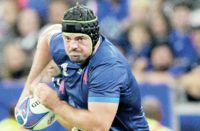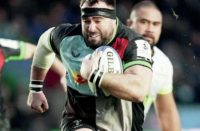It may still be some 14 months before the British & Irish Lions leave these shores to take on the formidable challenge of the All Blacks, but the countdown has begun and the time is right to take stock of the Home Nations challenge. This Lions match 23 has been picked on the evidence of the Six Nations Championsip. How much will it change?
It has been England's year, and with the Red Rose bouncing back to win the 2016 Six Nations title under the guidance of new coach Eddie Jones, this selection reflects that resurrection from the bitter disappointment of their 2015 World Cup pool exit.
England claim seven of the places in my Lions starting line-up which sees young Saracens forwards George Kruis (at lock) and Maro Itoje (at blindside) rewarded for their outstanding form. With another four on the bench the new champions provide almost half the 23.
As selection for this year-early side is based almost exclusively on form in Europe's flagship annual international tournament, injured former Lions luminaries such as Leigh Halfpenny, Tommy Bowe, Sean O'Brien, and Alex Corbisiero, have not been considered.
The same applies to many of the players, new and old, hustling for Test honours, some of whom saw a bit of Six Nations action off the bench. Of the new men, Wasps electric outside-centre Elliot Daly, and barnstorming Connacht lock Ultan Dillane come to mind, while among the established names Leicester powerhouse Manu Tuilagi, Saracens full-back Alex Goode and Leinster's decorated loosehead Cian Healy pushed hard but did not see enough Test action.
Whoever is appointed Lions head coach in September, whether 2013 victor Warren Gatland, or Jones, or double Championship winner Joe Schmidt, they know that a year in rugby is an unpredictable beast.
However, while the final selection shakedown will be the 2017 Six Nations what we know also is that the British & Irish larder looks well stocked with goodies.
If the 2015 World Cup did not reflect well on the Home Unions – with not a single semi-finalist – the Lions have the capacity to showcase them in a much brighter light. The advent of young guns like England's Anthony Watson, Kruis and Itoje should see to that. So should the gains made by the Irish with players of the calibre of Jack McGrath and Robbie Henshaw, the Welsh with Gareth Davies and Rob Evans, and the Scots with the rock-solid JP Nel.
Add the renewed threat posed by giant runners like George North in the backs and Billy Vunipola up front, as well as the savvy of the Irish 9-10 partnership of Conor Murray and Jonathan Sexton, and anyone writing the Lions off could catch a cold.
1. Jack McGrath (Ireland) – McGrath's durability and determination have helped him not only to leapfrog the 2013 Lion and fellow Irish loosehead, Cian Healy, in the pecking order, but also to edge out Joe Marler and the lively Welsh novice Rob Evans. McGrath is an aggressive scrummager who is rarely upstaged at the set-piece, and is a heavy-duty carrier in the loose – with the 26-year-old Leinster prop rewarded with a try in the romp against Italy.
2. Dylan Hartley (England, below) – Came of age as a captain by keeping his temper in check over the Six Nations, with no slip-ups this time. Hartley reinforced his disciplinary sea-change through assiduous attention to hooking's core components, picking out his jumpers with failsafe lineout throwing and striking at the scrum to get the ball to No.8 Billy Vunipola's feet. Not as dynamic in the loose as French counterpart Guilhem Guirado, but nor were any of his British and Irish rivals.
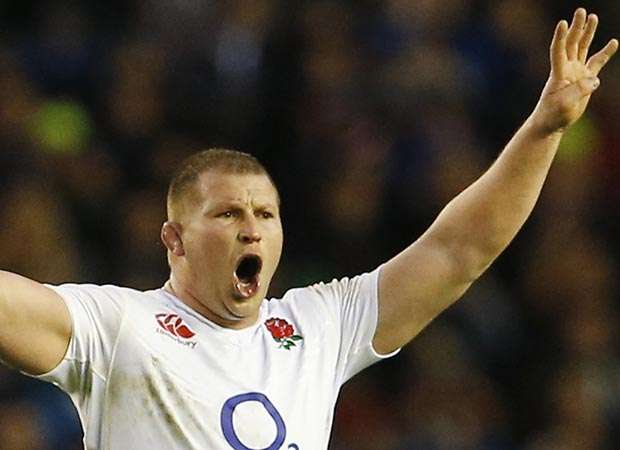 3. Dan Cole (England) – This campaign witnessed the resurrection of the Leicester strongman. Old King Cole's standing dipped following a neck disc injury two years ago, and it has been a long haul back to full fitness and form following surgery. However, his part in repelling a Welsh second-half scrum siege demonstrated his renewed prowess, and his greater experience gets him the starting place ahead of the sturdy Scottish Springbok, JP Nel.
3. Dan Cole (England) – This campaign witnessed the resurrection of the Leicester strongman. Old King Cole's standing dipped following a neck disc injury two years ago, and it has been a long haul back to full fitness and form following surgery. However, his part in repelling a Welsh second-half scrum siege demonstrated his renewed prowess, and his greater experience gets him the starting place ahead of the sturdy Scottish Springbok, JP Nel.
4. Alun Wyn Jones (Wales) – There are times when his stamina seems to border on the superhuman. Emerged as the complete second row package as stand-in skipper on the 2013 the Lions tour and has not taken a backward step since. The driving force behind the draw in Dublin, his strength and appetite for the close-quarter combat have lifted his Welsh team-mates throughout this campaign, as does his formidable set-piece presence.
5. George Kruis (England) – Has brain as well as brawn, demonstrating the crucial ability as lineout leader to translate complex equations into solutions of almost flawless simplicity on the pitch, with Rome the only glitch. Put that to rights quickly, and with his impressive work-rate at the tackle and low-driving body position Kruis is hard to stop – witness his opening try against Scotland. Signs, too, of him developing a special partnership with his Saracens mucker, Maro Itoje.
6. Maro Itoje (England) – His first two starts for England, against Ireland and Wales, confirmed his exceptional ability both as a rugby player and an athlete. Itoje seized the day in a way that is light-years beyond most 21-year-old forwards, including making tries, stealing lineouts and winning turn-overs in a stellar performance against Wales. Precocious skill, power and beady focus makes him as effective at blindside as lock, and gives the Lions a dominant force at the back of the lineout.
7. Sam Warburton (Wales) – At his best the Wales and 2013 Lions captain brings a physicality, speed and work-rate in the loose, whether in attack or defence, which no other British or Irish openside surpasses. Had a hard-grafting rather than spectacular tournament, but Warburton has that element where, when it gets tough, he gets going. He is a driving force for Wales, and staves off the challenges of England's James Haskell and the Scottish Kiwi, John Hardie.
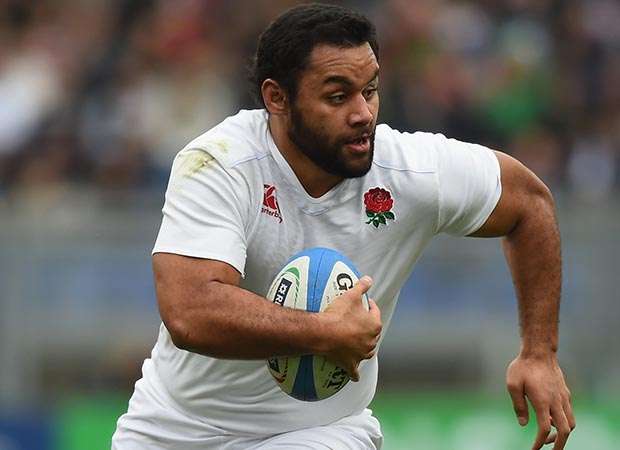 8. Billy Vunipola (England, above) – The best hard-yards merchant in this season's Six Nations by a distance. Big Billy's gains in fitness under Eddie Jones saw him play an essential role in England's winning start in Edinburgh with surging runs from the base, and he trumped that by getting them on the front foot in the home win over Ireland. His rhino-like charges have the priceless benefit of fracturing the flat-line defences that dominate the modern game by drawing-in multiple tacklers.
8. Billy Vunipola (England, above) – The best hard-yards merchant in this season's Six Nations by a distance. Big Billy's gains in fitness under Eddie Jones saw him play an essential role in England's winning start in Edinburgh with surging runs from the base, and he trumped that by getting them on the front foot in the home win over Ireland. His rhino-like charges have the priceless benefit of fracturing the flat-line defences that dominate the modern game by drawing-in multiple tacklers.
9. Conor Murray (Ireland) – Classy. The Irish 9 has the sort of power and combativeness that Mike Phillips used to offer around the fringes, as his tries against Wales and England confirmed. However, he also has a great mental compass when it comes to detecting space and opportunity – and the array of kicking skills to maximise on it. A scrum-half who is a creator as well as a finisher, and whose partnership with Sexton has settled into a well-worn groove.
10. Jonathan Sexton (Ireland) – While the Irish off-field strategy which attempted to turn Sexton into a no-tackle zone became tiresome, watching him carve out opportunities for an injury-hit outfit was not. There are few better than the Irish fly-half when it comes to playing flat and pressing the accelerator in attack, whether it's picking off front-row stragglers, working an overlap, or pinpoint kick-passes to the corner. Gets in ahead of main rivals Dan Biggar and George Ford.
11. George North (Wales) – Has impressive top speed for such a big man, and one of the best sights in this Six Nations was seeing North get back into full stride as the giant attacking force he was for the 2013 Lions. A virtuoso try against Scotland and further touchdowns against France and England were only the tip of the iceberg. North topped the Welsh metres gained, defenders beaten, and clean breaks stats – before setting a new milestone against Italy of becoming a 60-cap veteran at the age of 24!
12. Owen Farrell (England) – Farrell's goal-kicking against Wales was a world-class seven from seven, and his nerveless execution gave England the points cushion they needed to survive the late assault by the visitors. His adaptability is another significant asset, and operating at inside-centre as a second receiver off Ford his laser-beam passing frequently allowed England to outmanoeuvre their opponents. Add impressive defence, and he gets the nod ahead of Jamie Roberts and Robbie Henshaw.
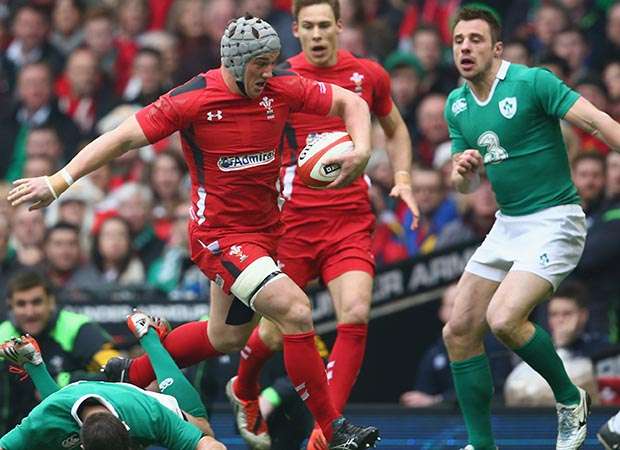 13. Jonathan Davies (Wales, above) – It's taking time for Davies to hit the peaks following injury that he scaled for the 2013 Lions, but he is a pedigree outside-centre, and there were signs during this campaign that he is not too far away. Pushed hard by England's Jonathan Joseph and Scotland's Duncan Taylor, but he steals a march because as well as being a bustling, elusive runner, he has a kicking game which is more developed than his rivals.
13. Jonathan Davies (Wales, above) – It's taking time for Davies to hit the peaks following injury that he scaled for the 2013 Lions, but he is a pedigree outside-centre, and there were signs during this campaign that he is not too far away. Pushed hard by England's Jonathan Joseph and Scotland's Duncan Taylor, but he steals a march because as well as being a bustling, elusive runner, he has a kicking game which is more developed than his rivals.
14. Anthony Watson (England) – Watson is so fast and elusive that if you give him a phone-booth of space he'll take the whole telephone exchange. The England wing has dancing feet and the spring-heels to give him unrivalled lift-off in aerial combat, but it's his raw speed that shreds defences. Against Wales he kept his strike rate on an upward trajectory by scoring his tenth try in 19 Tests, with Tim Visser, who made a late start to the tournament after injury (11 tries in 25 Tests), leading the chasing pack.
15. Stuart Hogg (Scotland) – When Hogg's on song Scotland are capable of spectacular harmonies, and his inspired tap-on for Visser's try against France was one. His have-a-go mentality and willingness to take a chance – allied to the speed and flair to succeed – sends a buzz of anticipation through crowds. Nudges in front of Mike Brown and Liam Williams after creating two tries against Italy, and going on a virtuoso romp against the French which saw him score one, make another, and land a penalty from his own half.
REPLACEMENTS
16. Rory Best (Ireland) – The Irish captain was like a stone in the sock of their opponents in the contest for the loose ball. Also did his set-piece duties expertly.
17. Mako Vunipola (England) – Impact man. The loosehead's swivel-pass to Owen Farrell was gold-standard, creating Jack Nowell's clincher against Scotland. A footballing prop who has also raised his scrum game.
18. JP Nel (Scotland) – Strong, silent type who doesn't like the limelight. The South African-born tartan tighthead had better get used to it, because he's transformed the Scottish scrum from shaky to solid.
19. Luke Charteris (Wales) – Towering, hugely experienced 60-cap lock who is at the heart of the Welsh lineout drive. A 6ft 9ins athlete who gets the nod over Joe Launchbury, Devin Toner, Jonny Gray and Courtney Lawes.
20. Taulupe Faletau (Wales) – His Six Nations tackle count was off the dial. Runs fast, links, scores tries, and is a menace over the ball. Rare bird who is gifted enough to cover all three back-row positions at Test level.
21. Ben Youngs (England) – Has tightened up his act. Service faster, tackling stronger, box-kicking preciser, decision-making sharper – gets in despite stiff competition from Greig Laidlaw and Danny Care.
22. Jonathan Joseph (England) – Did not dazzle, or do enough to get ahead of Davies, but his footwork and speed are unrivalled, and his defence consistently good. Superior strike rate bumps Robbie Henshaw.
23. Mike Brown (England) – Have-a-go drive, will to win and aerial bravery makes up for odd positional lapse. Keeps out Liam Williams because found more in attack than the Welsh full-back – but Alex Goode looking to gatecrash.


